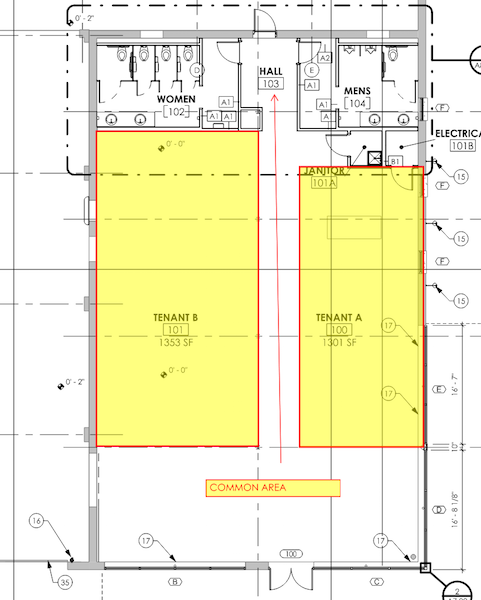
Specimen Collection and Processing
Beginning in the fall of 2020, all employees and students at the Rockefeller University campus (approximately 1400 persons) were tested at least weekly with a saliva-based PCR test developed in the Darnell Clinical Laboratory Improvement Amendments–Clinical Laboratory Evaluation Program laboratory (approval number, PFI-9216) and approved for clinical use by a New York State emergency use authorization. Protocols for the collection of saliva samples for clinical SARS-CoV-2 testing were reviewed by the institutional review board at Rockefeller University and were deemed not to be research involving human subjects. Institutional review board–approved written informed consent for the analysis of antibody titers was obtained from Patient 1, and the study was conducted in accordance with International Council for Harmonisation Good Clinical Practice guidelines.
In accordance with New York State regulations regarding eligibility, 417 employees who had received a second dose of either the BNT162b2 (Pfizer–BioNTech) or mRNA-1273 (Moderna) vaccine at least 2 weeks previously were tested between January 21 and March 17, 2021, and weekly testing continued thereafter. The demographic characteristics of these 417 persons and of 1491 unvaccinated persons tested in parallel at Rockefeller University during the same period are shown in Table S1 of the Supplementary Appendix, available with the full text of this article at NEJM.org.
The employees and students were instructed to provide a saliva sample in a medicine cup and transfer 300 μl into a vial containing 300 μl of Darnell Rockefeller University Laboratory (DRUL) buffer (5 M of guanidine thiocyanate, 0.5% sarkosyl, and 300 mM of sodium acetate [pH 5.5]).2 Samples were processed on the Thermo KingFisher Apex system for rapid RNA purification, and complementary DNA (cDNA) was amplified with the use of TaqPath 1-Step RT-qPCR (reverse-transcriptase quantitative PCR) Master Mix (Thermo Fisher Scientific) and multiplexed primers and probes that were validated under a Food and Drug Administration emergency use authorization (Table S2) with the 7500 Fast Dx Real-Time PCR detection system (Applied Biosystems). Samples were considered to be interpretable if the housekeeping control (RNase P) cycle threshold (Ct) was less than 40, and viral RNA was considered to be detected with both viral primers and probes (N1 and N2, detecting two regions of the nucleocapsid [N] gene of SARS-CoV-2) at a Ct of less than 40.
Viral Load Calculation
We calculated the viral load per milliliter of saliva using chemically inactivated SARS-CoV-2 (ZeptoMetrix) spiked into saliva at various dilutions. Extractions and RT-PCR were performed as described previously to determine the corresponding Ct values for each dilution (Fig. S1).
Targeted Sequencing
Reverse transcription of RNA samples was performed with the iScript mix (Bio-Rad) according to the manufacturer’s instructions. PCR amplification of cDNA was performed with the use of two primer sets (primer set 1: forward primer 1 [CCAGATGATTTTACAGGCTGC] and reverse primer 1 [CTACTGATGTCTTGGTCATAGAC]; primer set 2: forward primer 2 [CTTGTTTTATTGCCACTAGTC] and reverse primer 1). PCR products were then extracted from gel and sent to Genewiz for Sanger sequencing.
Neutralization Assay
Neutralization assays with pseudotyped replication defective human immunodeficiency virus type 1 modified with SARS-CoV-2 spike protein were performed as previously described.3 Mean serum neutralizing antibody titers (50% neutralization testing [NT50]) were calculated as an average of three independent experiments, each performed with the use of technical duplicates, and statistical significance was determined with the two-tailed Mann–Whitney test.
Whole Viral RNA Genome Sequencing
Total RNA was extracted as described above, and a meta-transcriptomic library was constructed for paired-end (150-bp reads) sequencing with an Illumina MiSeq platform. Libraries were prepared with the SureSelect XT HS2 DNA System (Agilent Technologies) and Community Design Pan Human Coronavirus Panel (Agilent Technologies) according to the manufacturer’s instructions. FASTQ files (a text-based format for storing both a biologic sequence and its corresponding quality scores) were trimmed with Agilent Genomics NextGen Toolkit (AGeNT) software (version 2.0.5) and used for downstream analysis. The SARS-CoV-2 genome was assembled with MEGAHIT with default parameters, and the longest sequence (30,005 nucleotides) was analyzed with Nextclade software (https://clades.nextstrain.org/) in order to assign the clade and call mutations. Detected mutations were confirmed by aligning RNA sequencing reads on the reference genome sequence of SARS-CoV-2 (GenBank number, NC_045512) with the Burrows–Wheeler Aligner (BWA-MEM).
Patient Histories
Patient 1 was a healthy 51-year-old woman with no risk factors for severe Covid-19 who received the first dose of mRNA-1273 vaccine on January 21, 2021, and the second dose on February 19. She had adhered strictly to routine precautions. Ten hours after she received the second vaccine dose, flulike muscle aches developed. These symptoms resolved the following day. On March 10 (19 days after she received the second vaccine dose), a sore throat, congestion, and headache developed, and she tested positive for SARS-CoV-2 RNA at Rockefeller University later that day. On March 11, she lost her sense of smell. Her symptoms gradually resolved over a 1-week period.
Patient 2 was a healthy 65-year-old woman with no risk factors for severe Covid-19 who received the first dose of BNT162b2 vaccine on January 19 and the second dose on February 9. Pain that developed in the inoculated arm lasted for 2 days. On March 3, her unvaccinated partner tested positive for SARS-CoV-2, and on March 16, fatigue, sinus congestion, and a headache developed in Patient 2. On March 17, she felt worse and tested positive for SARS-CoV-2 RNA, 36 days after completing vaccination. Her symptoms plateaued and began to resolve on March 20.
The Link LonkApril 22, 2021 at 04:01AM
https://ift.tt/3vfQ1tD
Vaccine Breakthrough Infections with SARS-CoV-2 Variants | NEJM - nejm.org
https://ift.tt/3d5QSDO

No comments:
Post a Comment